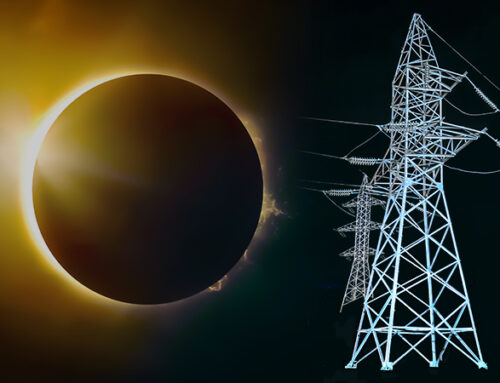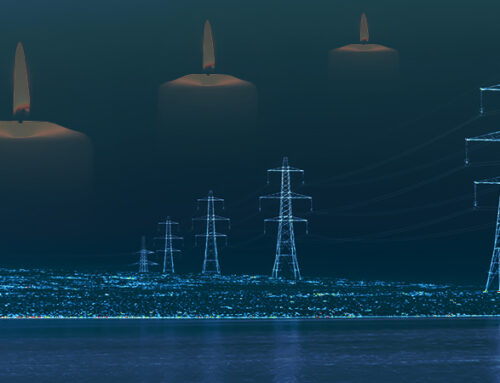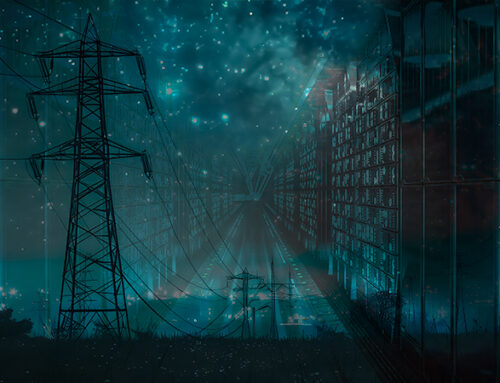Last week the Global Warming Policy Foundation has published a short report I wrote in the use of electricity interconnectors in the GB power market. Aimed at a lay audience, the report sets out the challenges we face in our growing reliance on electricity imports, which ties in well with my recent observations on the way that a reliance on wind and solar embeds a reliance on imports into our electricity system.
In its 2023 Future Energy Scenarios, National Grid ESO (NG ESO) said:
“To manage dunkelflaute periods, dispatchable thermal power plants (gas and/or hydrogen), depending on the scenario and year, are likely to be required. A combination of LDES (e.g. Compressed Air Energy Storage (CAES), Liquid Air Energy Storage (LAES), Pumped Hydro Storage (PHS)) and interconnectors will be required to manage the network during these periods.”
So far LDES and CAES have not been deployed at scale and there is limited scope for additional pumped hydro given the geology of the UK.
That we currently rely on interconnectors is not in doubt – we import large volumes of electricity very regularly. Most of the time imports simply displace more expensive domestic generation, which sounds good in theory, but this increases prices in the exporting market above what would be the case if they did not export.
For some countries this may not matter if for example surplus wind is exported which would be otherwise curtailed with the payment of curtailment fees. But in countries such as Norway where exports use up water that might be needed to generate electricity for Norwegian consumers later on (Norway has minimal pumping capacity so once water is used it is not replaced until it rains or snow melts), which matters a lot.
In fact, Ofgem has identified electricity exports as a source of consumer dis-benefit. One might assume that the countries which currently prop up our grid with exports might realise this is bad for their domestic consumers and have a re-think. This is already happening – Norway has twice amended its Energy Act to beef up powers to restrict exports and its coalition government is divided over whether to renew the Skagerrak interconnectors when they reach the end of their lives in the next couple of years. Sweden recently cancelled a planned link with Germany on the basis it didn’t want to be connected with such a dysfunctional market!
GB electricity market becoming more vulnerable
Our electricity system is becoming more fragile. Increasing demand from electrification will coincide with the closure of the last remaining coal plant (Ratcliffe, 2 GW) this month and the last four Advanced Gas Cooled Nuclear Reactors (4.7 GW) set to close in 2026 and 2028 although some extensions are expected but not yet confirmed. In addition, the futures of Drax (4 GW) and Lynemouth (0.4 GW) biomass plants is uncertain after 2027 when their subsidies expire. 10 GW of firm, non-intermittent generating capacity could leave the grid before the end of the decade.
That’s on top of the 10.5 GW of firm capacity which has closed since the inception of the Capacity Market. Since the first long-dated auction in 2018 only 3.5 GW new large-scale gas-fired plant has been secured, but 13.5 GW of conventional capacity closed including 3 GW nuclear (Dungeness, Hinkley Point B, Hunterston B) and 10.5 GW coal (Aberthaw, Cottam, Drax, Eggborough, Fiddler’s Ferry, and West Burton A).
And it’s simply not being replaced at the necessary rate to ensure energy security – only 3.5 GW of large-scale gas generation has been secured through the Capacity Market (and a further 840 MW of CCGT at Carrington which took FID before the first capacity auction). Hinkley Point C is not expected to open before 2030.
Even if we wanted to it would be hard to replace all this lost capacity with interconnectors. Nor should we want to. The Labour Party says it wants to cut reliance on imports through use of “home-grown” energy – a sensible desire but not one we’re going to achieve with the current obsession with intermittent renewables. As I will explain in an upcoming post, a reliance on intermittent renewables guarantees a reliance on imports: when wind and solar output are low, we rely on electricity imports and gas-fired generation. But at the same time, Labour opposes any increase in domestic gas production, so a reliance on gas-fired generation equates to a reliance on imported gas.
Also, as I describe in the report, many of the countries to which we are linked with electricity interconnectors share a similar wind-led energy transition strategy and have a weather correlation of 40-65%. This means that we will often have the same weather: if it’s not windy in Britain, it may not be windy in these markets either meaning that rather than being able to export electricity to us, they will themselves want to import. The exceptions are Norway and France, but Norway is increasingly keen to protect its hydro resources for its own use, and the aging French nuclear system has experienced widespread outages twice in six years, with the French nuclear regulator suggesting that such outages could be necessary again in future as additional issues may emerge as the reactors age.
.
If we don’t get our act together, we could be in real trouble in the late 2020s, with expensive, unreliable energy and all the social and economic harm that involves.







I wonder if unreliability in electricity supply will encourage new customers for domestic electric heating, particularly those storing heat in special bricks using off peak electricity which then uses standard water filled radiators to distribute the heat during the day. Yes, I have a 38 year old GEC Nightstor 100, but there is a British start up making modernised, efficient versions using similar technology. Surely this is the way forward for domestic heating.
It’s an interesting question since most people don’t realise that gas boilers rely on electricity to work. We recently had an extended power cut which shut down our boiler and we couldn’t re-start it. Luckily we get plenty of hot water from our Aga, and our rural location means we have redundancy with wood burners, and a small generator just in case…
The word ‘renewable’ implies some sort of circularity or recycling of resources, or possibly something like a perpetual motion machine which continually produces free stuff.
Absent electricity storage at scale (probably impossible in practice) It would be more accurate and honest to call wind and solar ‘intermittents’. This would then expose the lie for what it is, because electricity suppliers could no longer advertise that “100% of your electricity comes from renewable sources”
“100% of your electricity comes from intermittent sources” doesn’t quite cut it.
Another gripe I have is promoters saying such-and-such a wind farm/solar array will “produce enough electricity for x thousand homes”. What does that mean? is the power available 24/7/365? and what about industry – does that not matter?
Slightly o/t but speaking of industry; I’m not usually a betting person but I would lay a pound to a penny that within five years of Tata having set up their new electric arc furnaces, they will close them down due to the sky-high cost, and unreliability, of our power.
One really has to question the intelligence of our politicians. We used to have a good, reliable power generation system. Now we have two systems, both increasingly unstable, like two drunks trying to prop each other up.
Big thanks Kathryn for yet another excellent, compact informative analysis, so obvious.
I also question the intelligence of our politicians & their briefing teams.
Do they ever access Watt-Logic postings ?
Quote: Another gripe I have is promoters saying such-and-such a wind farm/solar array will “produce enough electricity for x thousand homes”. What does that mean? is the power available 24/7/365? and what about industry – does that not matter?
I also have a gripe; Why are we constantly bombarded from all sources that renewables will reduce our electricity cost, when in fact several years in it continues to increase ?
Finally, I can’t understand why all new builds are not subject to including solar roof panels & underfloor heating by planning authorities.
Barry Wright, Lancashire.
Hi Kathryn,
Another excellent report – thank you. We seem to be sleep-walking off a cliff!
I do have one minor quibble wrt the French nuclear fleet and your comment:
“The French regulator has suggested that as the fleet ages, this situation could be repeated in future, and that there will not be a decision on further life extensions until 2026, meaning that some older plants could be forced to close this decade”
EDF are most of the way through a massive programme (the “Grand Carenage”) of refurbishment, upgrades and modernisation of all their plants bar Fessenheim. The final cost will be €45 – 50 bn which gives some isea of the scale. This will enable operating life extensions of up to 20 years, as I understand it.
Never mind market risks from interconnectors, the whole Net Zero Strategy of renewables (wind and solar), better described by Tony above as “intermittents”, together with electrification is not only economic suicide but also military suicide:
How can it be safe to deindustrialise so we cannot make steel and munitions and hence military equipment?
How can it be safe to transition to chaotically intermittent and unreliable renewables and put all our energy eggs into one energy basket, electrification, when there is no plan or even an economic method to store grid-scale electricity?
How can it be safe to electrify everything and make our grid the biggest hacking target in the world? The end of our National Grid doesn’t have to brought about by a hostile actor hacking into it, it could simply be the result of a Carrington event that sends us back to the pre-industrial ages in one quick instant.
How can it be safe for China, a state described by our security services as “hostile”, to supply all our energy infrastructure – wind turbines, solar panels, the metals and minerals for motors, generators, batteries and cabling?
How can it be safe for our low energy density infrastructure to be spread out over half the North Sea? How will our depleted armed services protect all the wind turbines and undersea cables from air and submarine drones? Or all the vast expanses of solar panels? No undersea cable or pipe is safe today, as seen with Nord Stream 2.
How can it be safe to electrify our armed services – aircraft, ships, tanks? How will they be re-charged on the battlefield or at sea? Or in the air?
DRAX will be given another bung as its dispatchable generation and in our control despite all its shortcomings we can’t do without it now.
There is a worldwide solution, where just solar and wind is used, where there are interconnectors worldwide (or at least continent wide). Theoretically we could even use just solar, or just wind worldwide, because the sun is always shining or the wind is always blowing somewhere. It is only the inhumanity of the human race towards each other that prevents this. Comments about the disfunctionality of the German electricity market, could just as easily be said about the behaviour of different peoples and countries. Renewables work in certain circumstances, but perhaps the comments above recognise the impossibility of the ideal with the current political diversity across many different countries that would never support the cheapest option. Each continent should be able to be self-sufficient with renewable power, yet are unable to co-operate to achieve it.
On the largest scale, wind and solar are NOT intermittent!!
In some bizarre and impossibly cooperative world you could reach that conclusion.
Realty is another matter.
@Tim, On a large scale, wind and solar might be slightly more reliable, but do we want our power coming from -say- the Sahara wth all the political stability that goes with it?
One Russian trawler off the coast of West Africa accidentally on purpose severing the cable with its anchor would NOT be energy independence.
The EMN we saw on 14th October was against the background of having just lost RATS to closure, while evidently having some 5GW of CCGT offline for scheduled and unsscheduled maintenance, along with scheduled (Sizewell) and unscheduled losses in nuclear, with very low wind and solar output.
But the clincher was that NSL shut down overnight, having had a sag in output the previous evening – presumably to investigate/remediate that and the cause of the 1.4GW trip the previous week. That was on top of French interconnector imports being restricted to just 1GW via IFA1 since late September, with IFA2 and Eleclink apparently shut. A total of 4.4GW not available. With the low wind the Irish were importing close to 1GW, although they eventually helped out by cranking up their gas and coal to reduce imports below 300MW in the key afternoon hours. NEMO did provide its 1GW and VikingLink 1.4GW, but the Dutch had to be persuaded to fire up coal and only provided part capacity on BritNed having done so. Prices soared above £660/MW, and were evidently set by interconnectors on a demand diversion basis. There’s your market risk.
I see that Timera managed to dig into the SO-SO interconnector trades on 14th October which ran as high as £1030/MWh. A hostage to fortune (for someone at least, including National Grid of course)
https://timera-energy.com/blog/first-capacity-market-notice-of-winter-2024-25-issued/
Relying on interconnectors increases market volatility and energy security risks. While they help balance supply, they also expose the GB market to external price fluctuations. With limited LDES deployment, a stronger focus on domestic generation and storage is crucial for long-term stability.